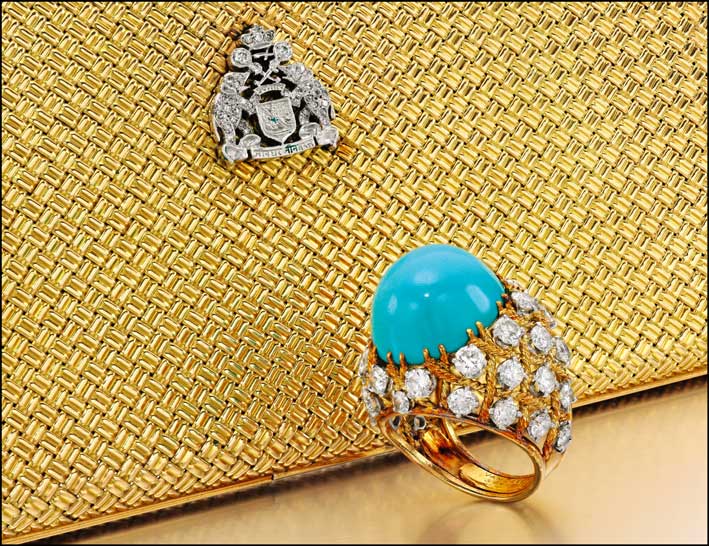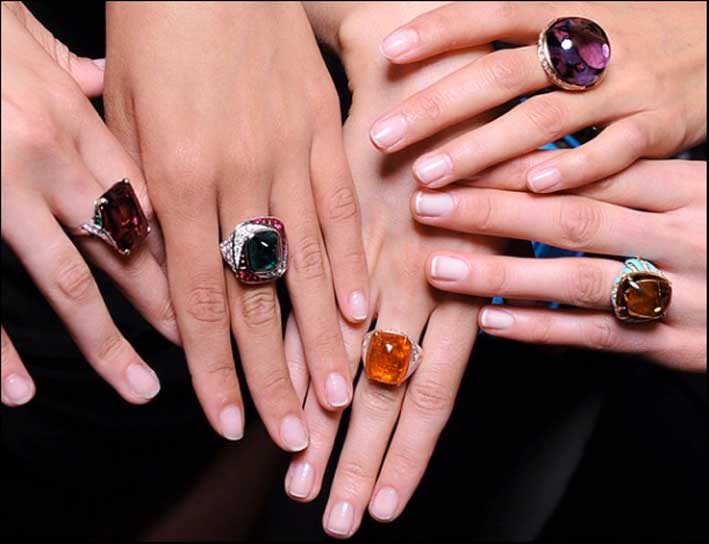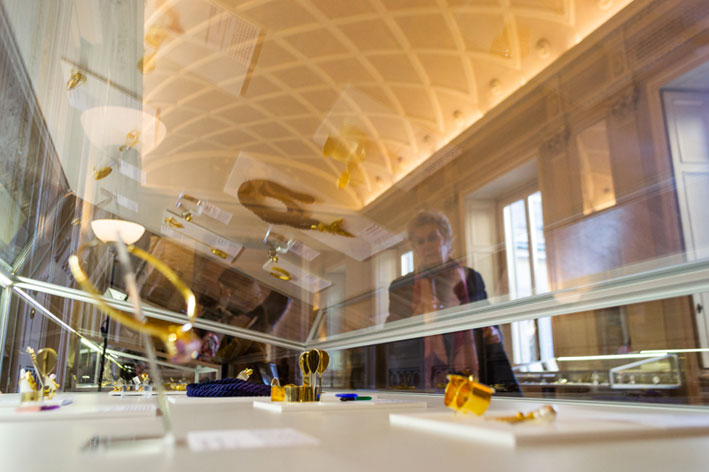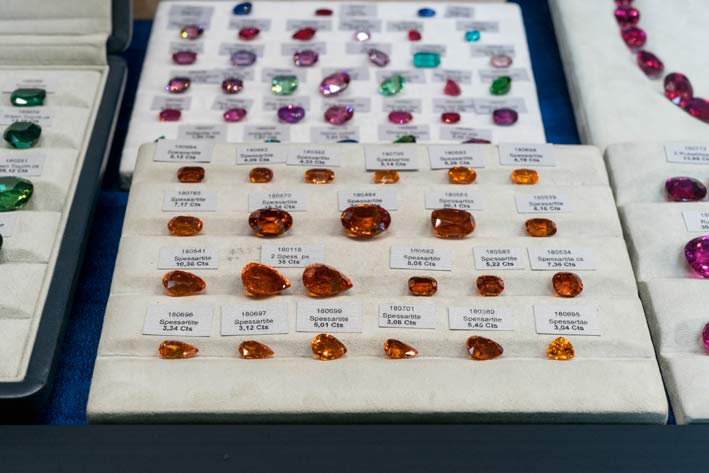Want to wear the British crown jewels? Take part in the Sotheby’s auction held in London on July 16. The Sotheby’s London sale of Fine Jewels, not surprisingly, is entitled “Two Centuries of Jewel Design”. The sale offers a selection of designer pieces, including replicas of the Crown Jewels. Among the top jewels are those signed by Cartier, Van Cleef & Arpels and Giuliano. The idea is to represent each era with designer jewels, from the 19th century to Art Deco.
The Crown Jewels
Lot 476 which, as mentioned, includes replicas of the Crown Jewels. The pieces date back to 1950 and include a replica of the St. Edward’s Crown, which is represented on the Royal Coat of Arms of the United Kingdom; a replica of Queen Mary’s Crown which was originally commissioned by the Queen herself from Garrard & Co. for the coronation of her husband, George V, on 22 June 1911, and a replica of Queen Victoria’s coronation ring (lot 27, £3,100-£5,600 or estimate £4,200-£7,600). These replicas were made for touring exhibition in Commonwealth countries following the coronation of Queen Elizabeth II at Westminster on 2 June 1953.

Ancient Masterpieces
The auction also features ancient jewelry. An example of naturalistic jewelry, very popular for much of the 19th century, is a diamond tiara that can be worn in different combinations: as a diadem, necklace, aigrette, brooches and corsage. The piece is accompanied by five original drawings (lot 474, estimate: 18,500-24,600 euros). Among the ancient pieces, a gold and enamel brooch from 1880 signed by the Neapolitan Carlo Giuliano (1831-1895), who moved to London and became a famous jeweler of British high society. The proposed piece represents a Harlequin climbing a ladder (lot 51, estimate 9,900-14,800 euros). The arts of Japan and China had an extraordinary impact on the design of jewelry in the mid-19th century. Japanese prints, including those of Hokusai Manga, a pictorial encyclopedia of every aspect of Japanese life, were the main source of inspiration for French jeweler Alexis Falize (1811-1898), as seen in a pair of buttons from 1870 (lot 50, estimate €3,700-4,950).
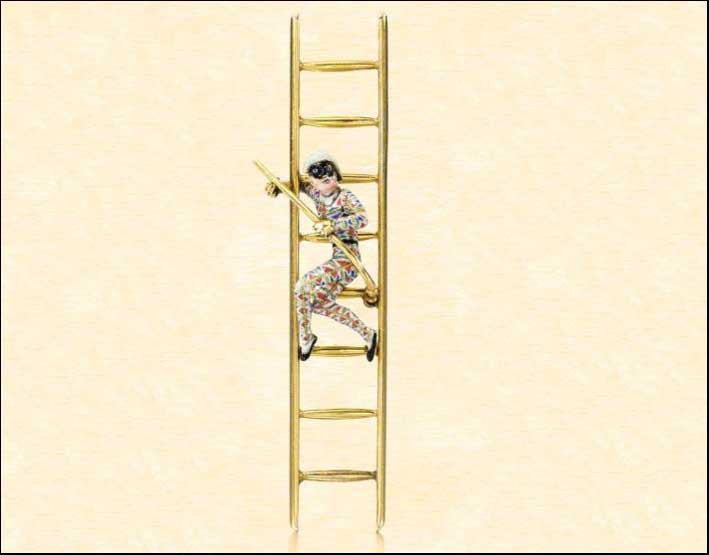
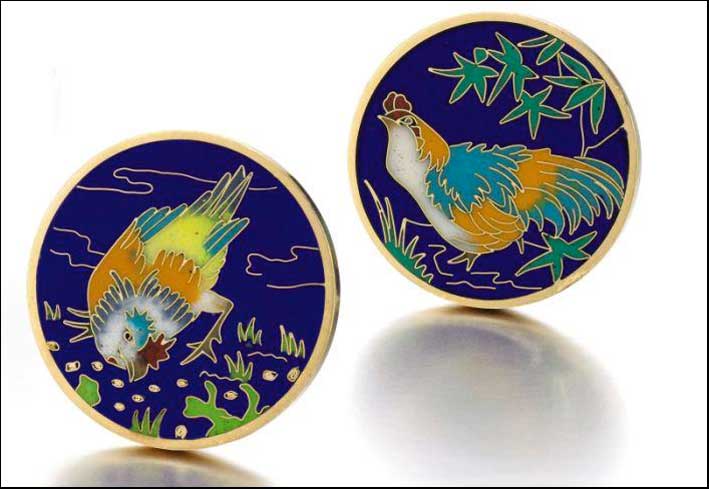
Art Deco
The sale includes a series of jewels from the Art Deco era, where the requirement was for strong dynamic geometric shapes to complement the latest fashion in design, as in the case of Chanel and Lanvin. Strong shapes as in architectural drawings, inspired by Cubism, Futurism, Expressionism and the arts of Africa and the Far East, all with an emphasis on modernity and speed. As in the case of the reversible enamel and diamond bracelet, made in 1920 by Verger Frères, French jewelers renowned for their creations, which marry Art Deco and Art Nouveau (lot 313, estimate 24,600-36,900 euros). Cartier was at the forefront of some of the most important trends in jewelry design of the 20th century. As in the clip with aquamarine and diamonds of geometric design dated 1930 (lot 268, estimate 7,400-9,900 euros).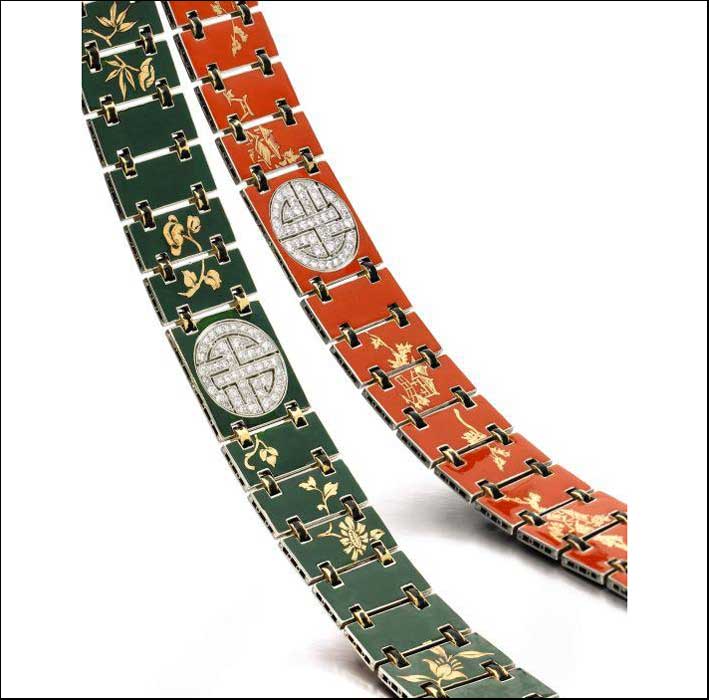
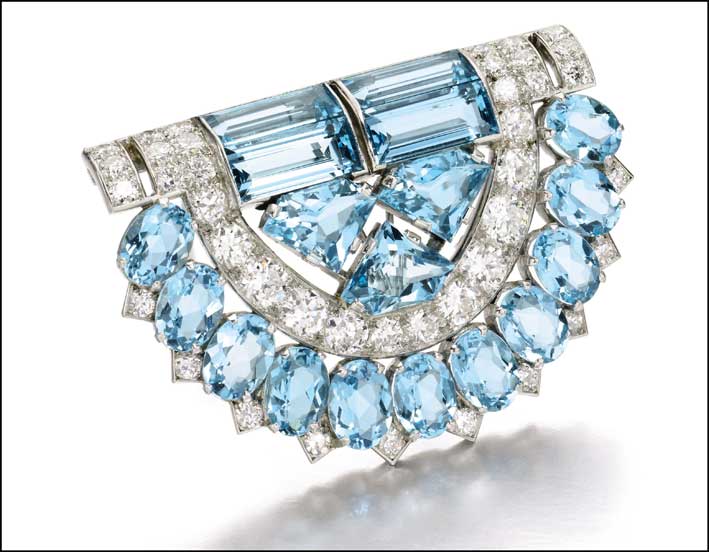
Accessories
The auction also includes Art Deco accessories, starting with a lipstick and powder holder in enamel and diamonds by the famous Argentine jeweler Walser Wald in 1920 (lot 310, estimate €4,950-6,200) and a vanity case in onyx, enamel, coral and diamonds by Lacloche Frères, dating back to the same period (lot 311, €9,900-14,800). More recent accessories include a 1960 gem-set evening bag by Van Cleef & Arpels, originally a gift from Queen Victoria Eugenia of Spain (€5,600-8,000).
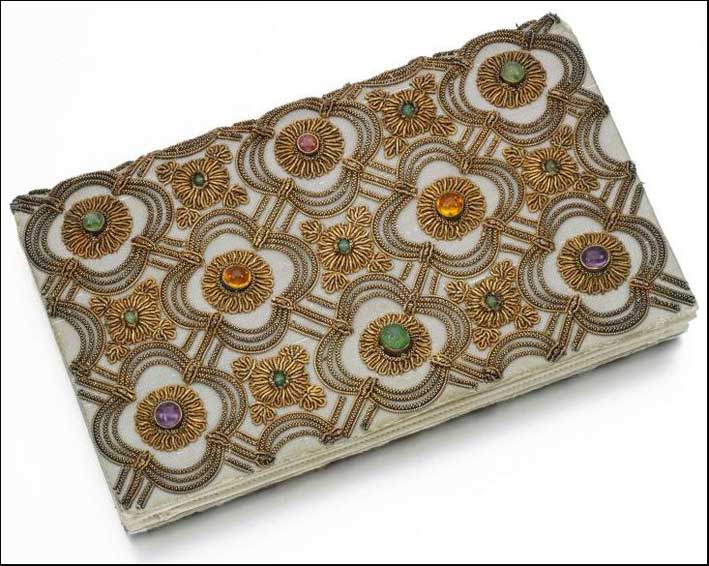
The Jewels of the Maharani of Baroda
Other pieces of illustrious provenance are the three jewels that, by family tradition, were part of the collection of Maharani Sita Devi Sahib of Baroda, purchased directly by her son, Princie, in 1970. Known as the “Indian Wallis Simpson”, because of her passion for jewels and her strong personality, the Maharani of Baroda (1917-1989) lived a luxurious lifestyle and built up an extraordinary collection of jewels, especially with creations by Van Cleef & Arpels.